Just because you have little ones doesn’t mean you need to avoid raising chickens! While many people assume that raising a flock of backyard chickens is off-limits if you have kids, the opposite is actually true.
Raising chickens is a great way to improve your kids’ self-esteem, autonomy, and interaction with the natural environment.
However, not just any old chicken breed will do. Some birds are known for being aggressive, so it’s important that you do your research before building your chicken coop and investing in a flock of chickens. Here are the best tips for raising chickens with small children, as well as the best breeds to consider.
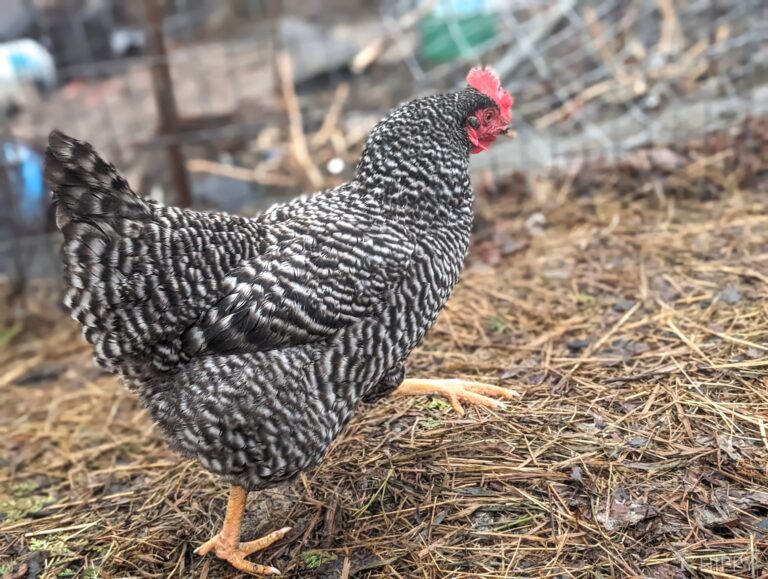
#1. Plymouth Rock
- Purpose: Dual purpose
- # of Eggs per Week: Four to five
This average-sized chicken has a long life span, making it a good choice for parents who aren’t quite ready to explain to their children the life-and-death process quite yet.
As gentle chickens, this breed gets along well with most people as well as with other pets and breeds of chicken.
In the United States, Plymouth Rock chickens can be raised for both meat and eggs. As one of America’s oldest breeds, it’s the one you have to consider if you are looking for a child-friendly chicken breed.
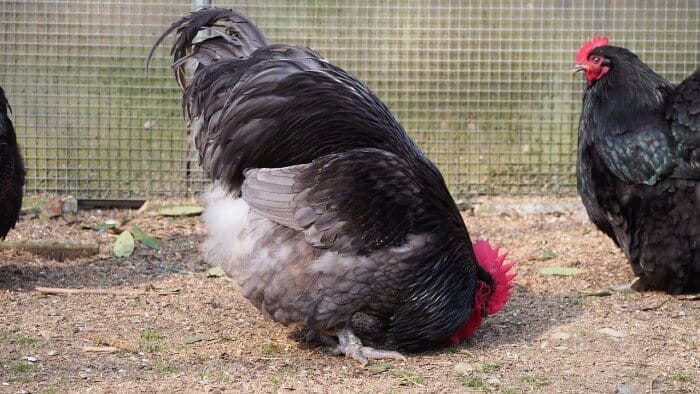
#2. Buff Orpington
- Purpose: Dual-purpose
- # of Eggs per Week: Three
The Buff Orpington is just one of many color variations of the Orpington chicken breed.
While color doesn’t play much of a role in the disposition of this gentle breed, you may find that Buff Orpingtons are the easiest to find at your local hatchery. They are also available in blue, black, and white, but all produce light brown eggs.
Originally from England, these chickens have some of the most docile personalities and are quite large to boot. They have luscious golden feathers that your children will enjoy petting, and they also enjoy being held.
In fact, these friendly birds are so mild-mannered that they are routinely referred to as the “golden retriever of the chicken world.”
These chickens are good runners but aren’t terribly flighty, making them low-maintenance and easy to care for. Laying up to 190 eggs per year, these English chickens can also be raised for meat.
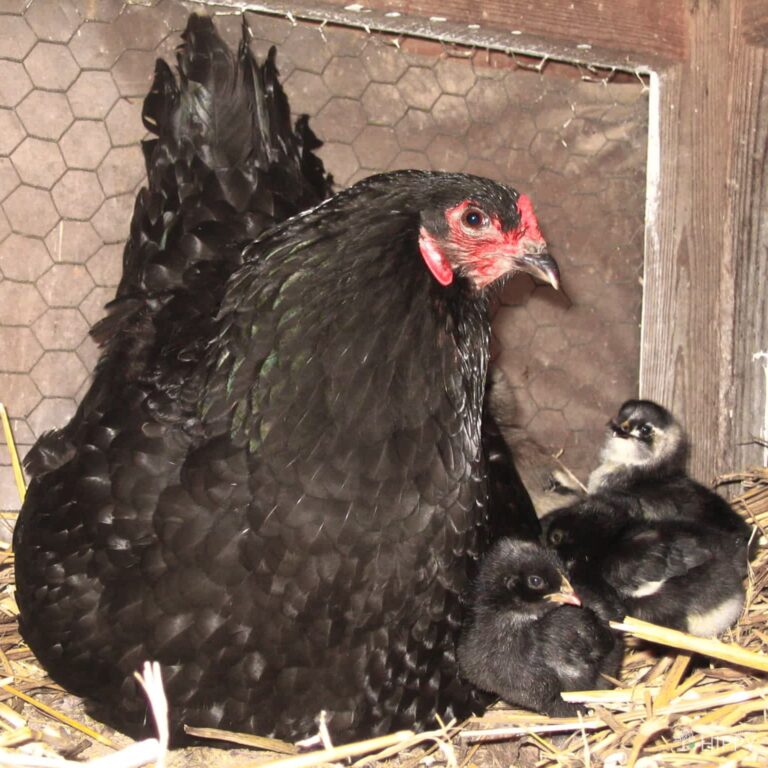
#3. Australorp
- Purpose: Dual purpose
- # of Eggs per Week: Five
The Australorp is an Australian breed of chicken with iridescent black feathers that look almost green in the hot summer sun. These chickens tend to be the most dominant members of mixed folks, and they prefer to live in confinement. They like to stay in tech coop but will also free-range if you give them the space to do so.
These chickens were bred from Black Orpingtons and are both great layers and great mothers. As curious, outgoing birds, these chickens are remarkably friendly.
They will also give you impressive egg production of around five large brown eggs each week, or 250 each year.
This chicken actually was the breed that broke some of the first world records in egg laying! It remains a popular breed in the western world today.
#4. Cochin
- Purpose: Ornamental
- # of Eggs per Week: 3-4
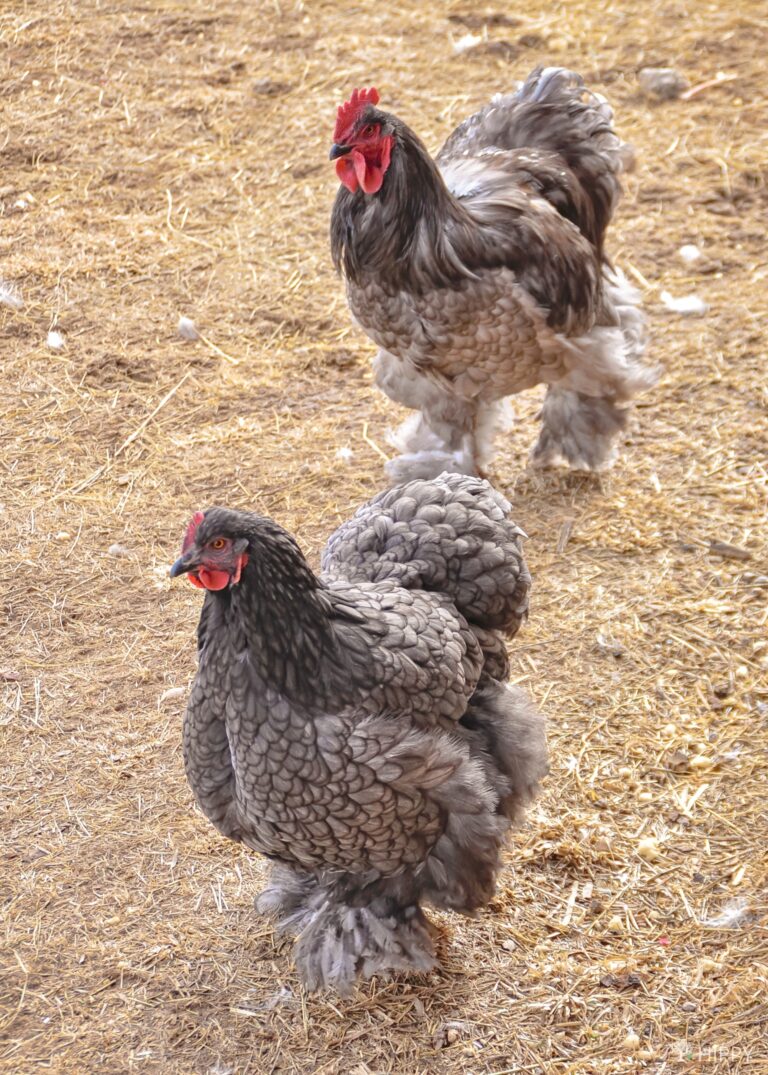
The Cochin chicken is available in both a standard and bantam size, but the bantam variety tends to be the most popular for families with small children.
They enjoy being held and can easily adapt to life in a coop. However, they are also good foragers and will do well when allowed to free-range, too.
The Cochin breed has some unique distinguishing characteristics. These birds can be found in multiple different colors – eight, to be exact – and have fully feathered feet.
Some varieties even have curly feathers, making them the new talking point at your child’s next backyard birthday party. These chickens lay light brown eggs and are great mothers, but are better as ornamental breeds than they are for relying on meat and egg production.
#5. Brahma
- Purpose: Meat
- # of Eggs per Week: Three
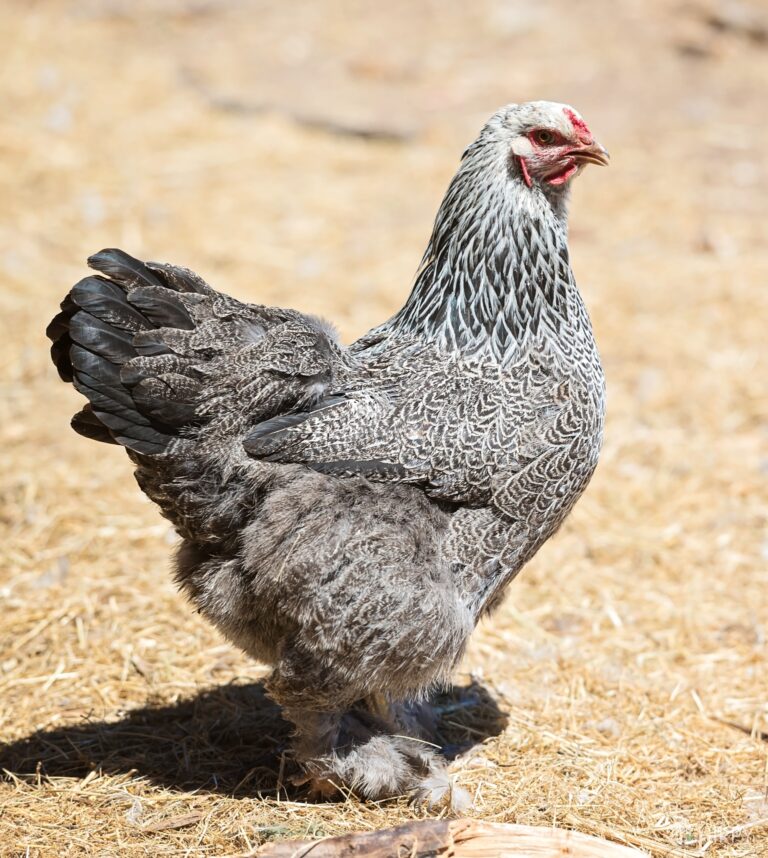
Brahma chickens are also available in standard and bantam sizes. These chickens aren’t shy at all, rarely becoming nervous around other birds or our children.
They are easily trainable, so if you have a child that is interested in participating in 4H or showing his birds at the county fair, this is the one to consider. They don’t mind being handled and get along well with other chickens. Even the rooster tends to be docile.
These chickens can be found in a variety of gorgeous colors, such as white with black speckling. Like Cochins, they have feathers on their feet. Raised primarily for meat, these chickens do produce modest amounts of eggs if you want to keep them for that purpose. These chickens lay brown eggs roughly every other day.
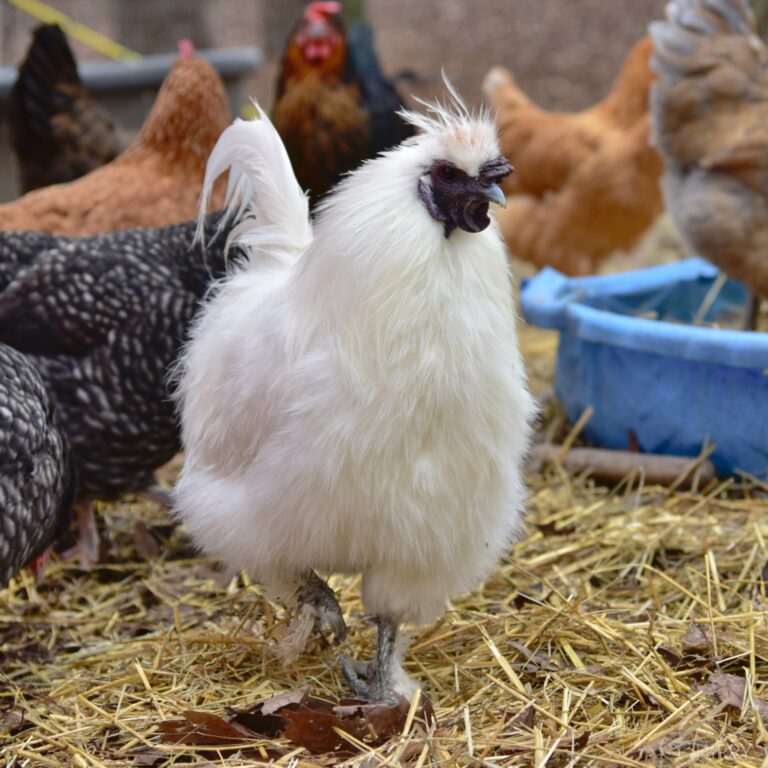
#6. Silkie
- Purpose: Ornamental
- # of Eggs per Week: Three
This teeny-tiny breed is one of the most well-respected in Asian cultures. Prized in places like China for its health-boosting meat, this chicken is usually raised as an ornamental breed in the United States.
Although it is bred in both bantam and standard sizes, it can only be purchased as a bantam breed in the United States.
This chicken is small and lightweight, making it easy for children to handle. It also has a lovely fluffy appearance, with feathers that are poofy instead of smooth.
These sweet-natured birds really, really love people, and are entirely content to sit in your lap much of the time. If you want a chicken that is as close to a true pet as possible, you could hardly do worse than a silkie bantam!
This chicken also has black skin instead of yellow and can sport a variety of feather colors, too. The chicken has five toes, like the Faverolle chicken, and lays tiny creamy white eggs.
If you’re relying on your chickens for egg production, unfortunately, the Silkie chicken is not the best choice for you. While the eggs are gorgeous, some sporting a lovely pinkish tint, these chickens have a tendency to go broody.
In fact, they are such excellent mothers that they are often raised to be surrogate parents to other poultry babies. However, when Silkie hens are actively playing, you can expect to get about three eggs each week.
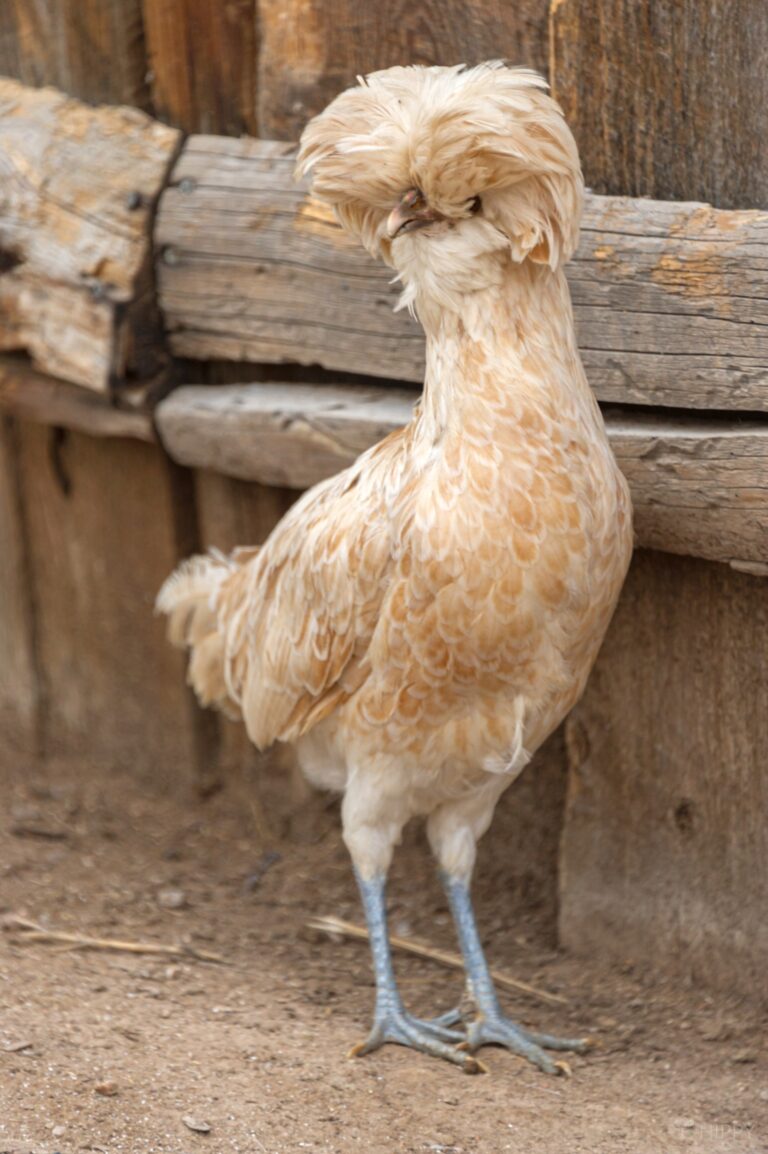
#7. Polish
- Purpose: Ornamental
- # of Eggs per Week: Two
If you really want to get your children’s friends talking, consider investing in a few Polish chickens. These birds have quite the unusual appearance, with poofy head feathers and vibrant displays of color. The most common color pattern is white with black edging.
These chickens are prone to some health problems related to their head plumage. Sometimes, they can have trouble seeing or you may notice that your other chickens pull feathers. However, you can easily trim these to improve the quality of your Polish chicken’s life, and it will make it easier to handle, too.
Polish chickens can be purchased in both bantam and standard sizes. Although they aren’t usually raised for egg or meat production, reducing pore volumes of both, they are great pets or showing animals for people with young children.
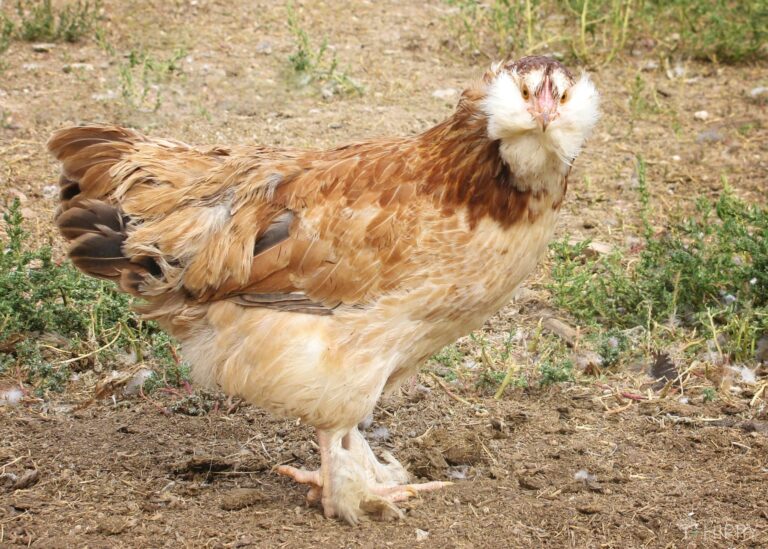
#8. Faverolle
- Purpose: Egg production
- # of Eggs per Week: Four
Faverolles originated in France, and they have a unique appearance. Though small, these chickens are great if you need to keep them confined to a run or coop. They are exceptionally friendly and easy to train, making them a good pet for young children. Faverolles have five toes instead of four, as well as fluffy cheek feathers and a feathered beard.
Most people purchase Faverolle chickens in a light salmon color, but they can be found with other colors and patterns as well, such as white. Faverolles are known for being chatty – something your children will get a real kick out of.
These birds are so docile that they tend to be at the very bottom of the pecking order. You’ll need to be careful about introducing them to a flock that has already been established, but once they get settled, you’ll find that they lay about four pale cream-colored eggs each week.
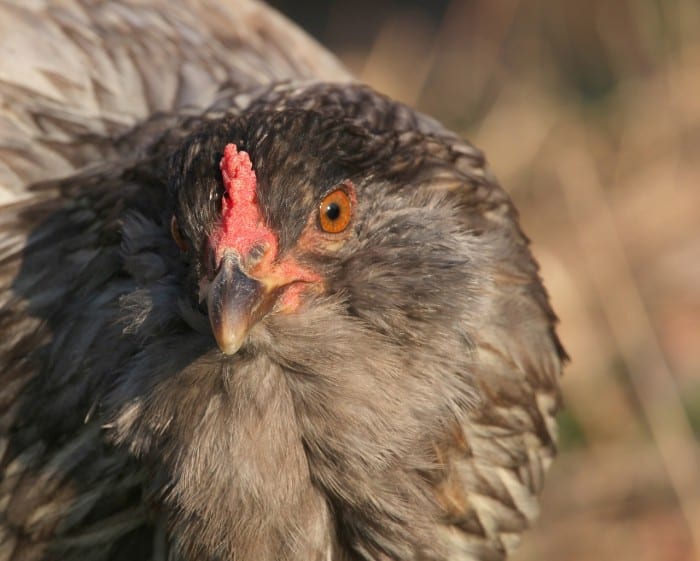
#9. Easter Egger
- Purpose: Egg production
- # of Eggs per Week: Four
If your kids have begged for a basket of eggs that look like the ones they see in pictures – that is, with dozens of multicolored eggs that remind you of the Easter season – you should consider raising an Easter Egger chicken. These birds have different appearances but are usually found in a rusty red color.
However, what’s truly remarkable about this breed is that it is able to lay eggs that are tinted in various hues, like green, blue, olive, and pink. Though not recognized as an official breed, the Easter Egger has a unique genetic trait that makes them the star of the egg-producer world.
These chickens are also decent producers, laying up to four eggs each week, and they’re exceptionally friendly and curious, too.
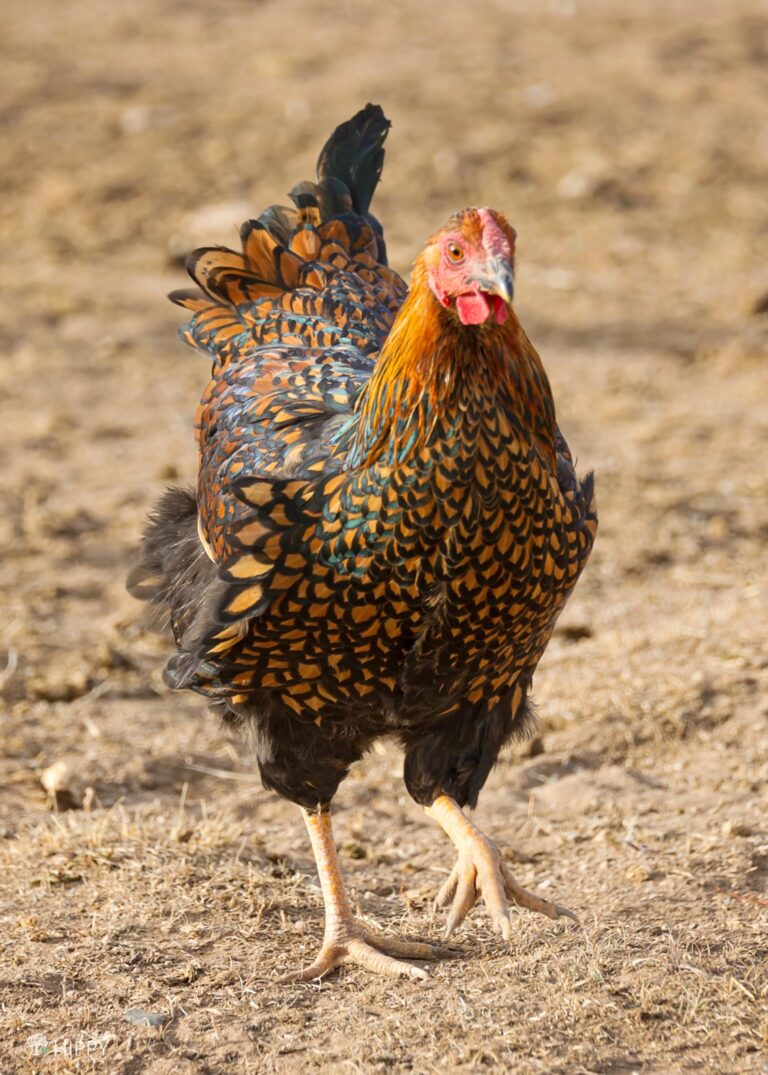
#10. Wyandotte
- Purpose: Dual-purpose
- # of Eggs per Week: Three to five
Wyandottes are beautiful chickens, with light brown wings tipped in black. These chickens can produce up to 200 light or dark brown eggs every year, giving you several eggs each week.
They have amazing personalities that make them fun to be around – and they’re incredibly docile, too.
This dual-purpose chicken can be raised for both eggs and meat. She is both calm and friendly, preferring to keep to herself.
While Wyandotte chickens tend to run a bit slow, they are still good foragers that can be allowed to free-range. They don’t mind being picked up and held, but they are not great fliers.
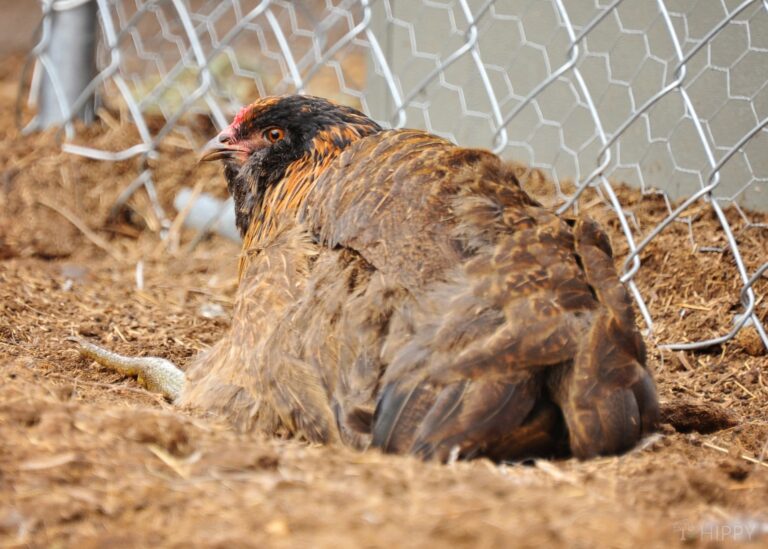
#11. Ameraucanas
- Purpose: Egg production
- # of Eggs Per Week: Three to four
Amerauacans lay gorgeous blue eggs. While these chickens don’t really like to be carried around, they are not aggressive and will get along well with other members of your flock. You can find them in multiple colors, such as wheat, black, and blue.
This chicken breed was developed in the United States in the 1970s, hailing from Araucana chickens that were brought here from Chile. These chickens lay blue eggs, and are one of the few breeds to do so. It has peace comb and a beard, and has either small or totally absent wattles.
#12. Olive Eggers
- Purpose: Egg production
- # of Eggs Per Week: Depends on parent breeds
These chickens lay elegant olive-green eggs. They have feathered feet and adorable cheek muffs, usually found in black or blue colors. These chickens are small and like to be carried. They are exceptional calm and the colored eggs don’t hurt, either.
This hybrid chicken is not a recognized breed, but generally is the result of crossing a blue egg laying chicken with one that lay brown eggs. They are often bred from Marans, Legbars, Welsummers, and Ameraucanas. Because of this, the average egg production each week can vary among individuals.
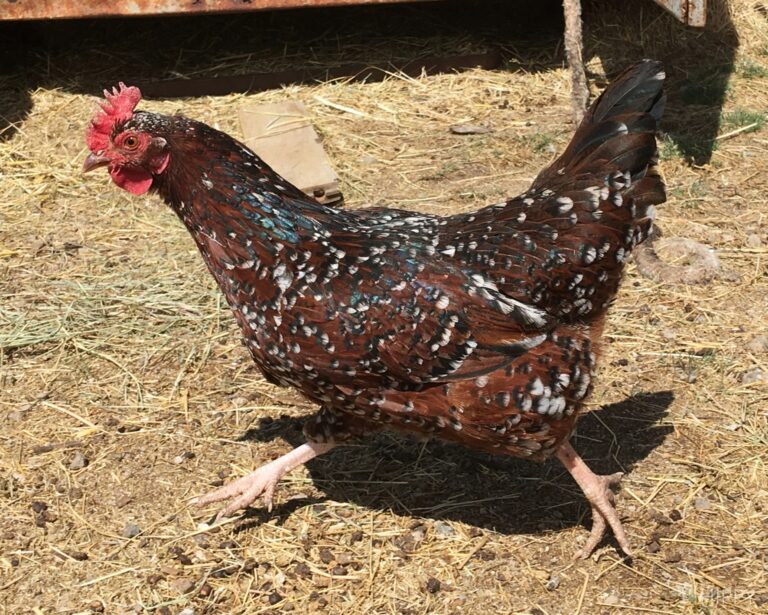
#13. Sussex
- Purpose: Dual-purpose
- # of Eggs Per Week: Three to four
Sussex chickens are known for being loving and even-tempered. Even roosters have a reputation for being easy going.
These chickens lay brown and cream-colored eggs, with most hens producing anywhere between 200 and 250 eggs each year. You can find them in various shades, including red, light, and speckled.
Sussex chickens are voracious eaters. They can gt a little cranky if you get between them and their food, so it’s important that you teach your children how to respect the chickens’ boundaries. Allowing the birds to free range can cut down on this cranky behavior, too.
#14. Rhode Island Red
- Purpose: Dual-purpose
- # of Eggs Per Week: Four to five
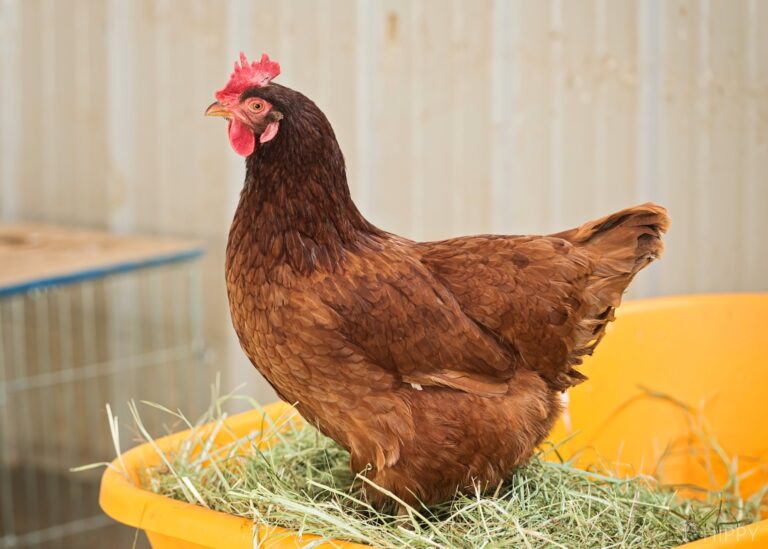
The Rhode Island Red chicken is an excellent choice if you’re looking for a bird that can provide both eggs and meat. These chickens lay large, brown eggs, up to 275 each year.
This hardy chicken breed is one of the most popular in the United States. They are relatively low-maintenance and can withstand cold weather conditions.
Rhode Island Reds are friendly and not afraid of people, being generally good-natured.
However, they can be a bit aggressive when it comes to food so it’s important to teach your kids how to respect the birds’ boundaries and to interact with them properly around feeding time.
But other than that, it is common to see a Rhode Island Red tagging along with its favorite person on their daily chores!
#15. Leghorn
- Purpose: Egg production
- # of Eggs Per Week: 6 plus.
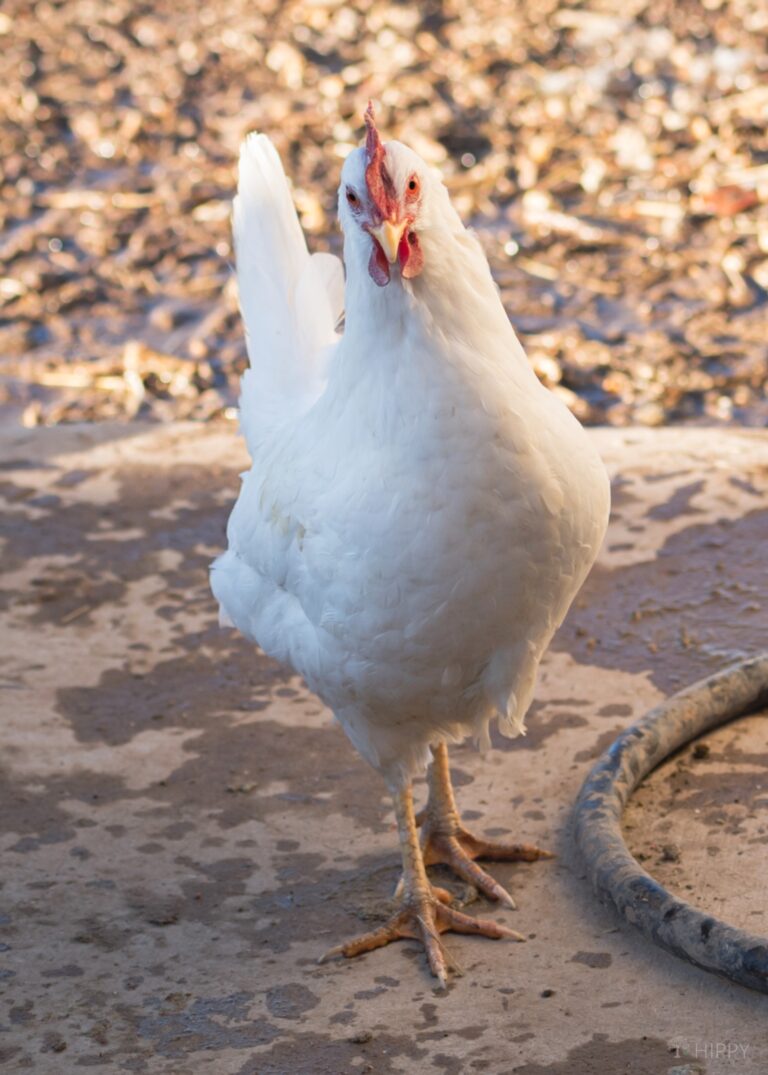
The Leghorn chicken is an excellent choice if you’re looking for a healthy bird that can provide you with tons of eggs. These chickens lay large, brown eggs, up to 275 each year.
This hardy chicken breed is one of the most popular in the United States and is commonly used to breed birds capable of high-volume egg production for individuals and industrial settings alike.
They are relatively low-maintenance and can withstand cold weather conditions well which makes them popular with people who want hardy stock. Leghorns are generally good-natured birds, but surprisingly athletic and prone to flightiness.
This means they can be a bit more difficult to catch and handle if they aren’t in the mood, so it’s important to have plenty of interaction with them as chicks onward so they will bond to you.
This is a great opportunity to teach your kids how to properly handle and care for chickens!
What Are the Benefits of Raising Chickens for Your Kids?
If your kid has been pestering you to get chickens or any other pet for a long time, you may be hesitant – and for good reason.
However, allowing your children to raise chickens is a smart choice, to just because chickens are remarkably easy to raise, but because they offer several benefits in return – besides the obvious fact that they will give you plenty of cheap eggs, meat, and fertilizer for your garden.
Chickens help kids appreciate and understand the food system.
If your children are able to understand where their food comes from, they will have a deeper appreciation for what’s on their plate. This will make it easier to encourage them to eat a healthy, varied diet, and also teach them the value of life.
Caring for the chickens teaches your children responsibility.
From cleaning the coop to daily feeding, requiring your children to care for their chickens not only teaches responsibility, but it does so in a practical manner.
By making it part of your children’s daily chores to take care of the chickens, they’ll be much more responsible when this applies to other areas of their lives, too.
Chickens help to teach students the circle of life.
If you are able to hatch your own baby chicks, either by allowing a hen to go broody or using an incubator to do so, you can teach your children a valuable lesson about the circle of life.
And not just in regards to birth, either – chickens die, unfortunately, and exposing your children to that sad aspect of life is a great lesson to learn early on.
Chickens can help get your kids involved.
When your children are a little bit older, chickens are a great project to help get your kids involved in extracurricular activities like 4-H or FFA (Future Farmers of America).
You don’t need a ton of space to raise chickens – you can even keep a few chickens if you live right in the middle of a city, in most cases! But having chickens will allow your children to show their animals – and to show their pride.
Tips for Raising Chickens When You Have Kids
Get your chickens as baby chicks. Encourage your children to handle them often, which will acquaint them with each other.
It’s important that you introduce your children to the proper techniques of handling chickens so that they don’t injure them, but it’s also important that your chicks become acclimated to being held.
Always have an adult present when your children are interacting with the chickens, particularly if they are younger than five years old. You will also want to enforce strict handwashing rules so that you don’t spread dangerous diseases like salmonella.
Consider investing in a mixed flock. Although some cities or towns will only allow you to have five or six chickens, getting a few types of chickens from different breeds will allow you to create a friendlier, more attractive flock.
Remember that the individuals in a flock will always vary. Even though you might have heard that a specific breed of chicken is more docile, not all individuals will be friendly. You can always have an aggressive rooster or a cranky hen mixed into a flock.
Finally, keep in mind that certain circumstances will dictate a chicken’s temperament more than its breed. For example, if your chicken feels threatened – or if you are threatening a chick with mama around – you are more likely to have some problems with your normally even-tempered chickens.
Therefore, it’s important to teach your children to treat their chickens with respect. While many breeds will come when called and tolerate being handled, you should make a point of teaching your children how to recognize signs that your chickens are getting ornery.
Should You Raise Chickens If You Have Children?
Chickens and children are a great match. Because chickens are so easy to care for – and usually quite easy to train – they have many valuable lessons to teach your children.
They offer more than just the value of owning a pet – they offer lifelong memories. Consider raising one of these child-friendly chicken breeds if you want to provide your children with endless amusement and chicken cuddles.
Oh – and having a daily supply of eggs isn’t a bad thing, either!
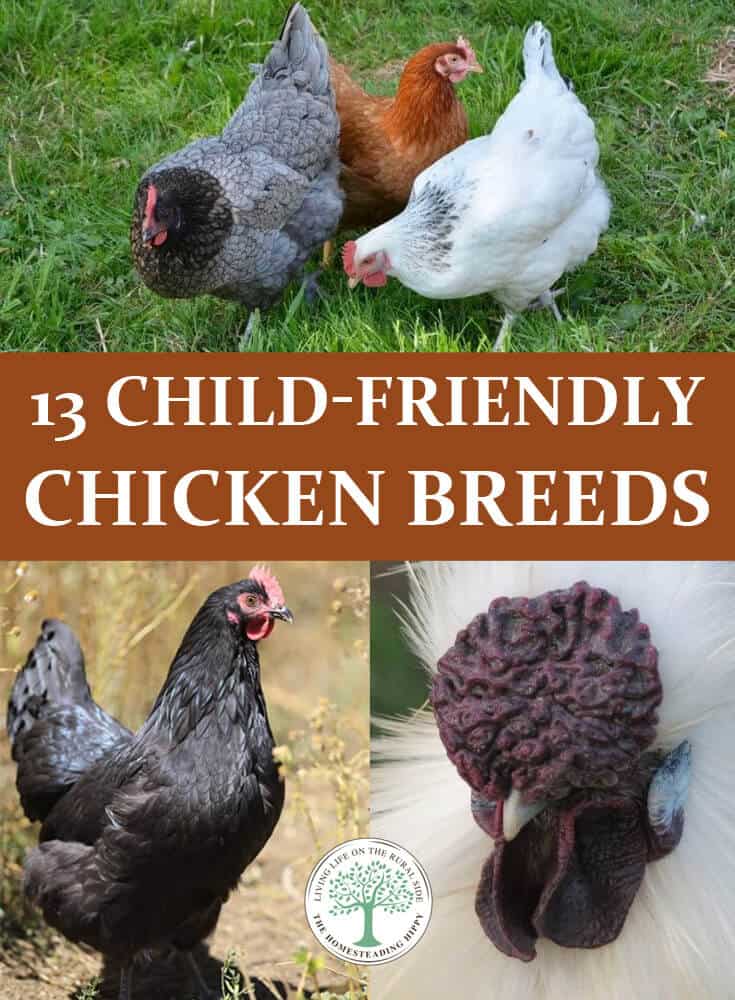

Rebekah is a full-time homesteader. On her 22 acres, she raises chickens, sheep, and bees, not to mention she grows a wide variety of veggies. She has a huge greenhouse and does lots of DIY projects with her husband in her ever-growing homesteading endeavor. Learn more about Rebekah here.

I loved this article!we recently lost our Lavender Orpington. We are so heart broken and are looking for some baby girls. I don’t want roosters because I don’t want lots of babies . Actually I wouldn’t mind 4 girl chicks. Lavender, buff Orpingtons. South Texas.